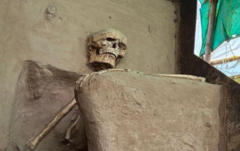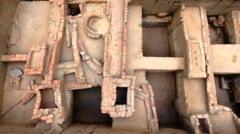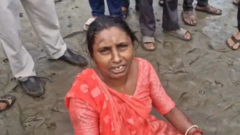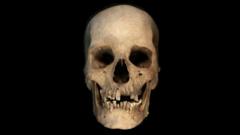The skeleton of a man, thought to be in his forties, was excavated sitting cross-legged in a meditative posture, and remains a remarkable discovery that highlights ancient burial practices. Years of governmental discussions have yet to yield a resolution, with the skeleton currently exposed to environmental elements in a makeshift tent. As the town of Vadnagar boasts a newly inaugurated $35 million Archaeological Experiential Museum, it faces criticism for failing to include the skeleton in its exhibits, raising questions about preservation practices and regional heritage management.
Furthermore, Vadnagar's long history reveals traces of civilizations dating over 2,000 years, positioning the skeleton as a vital connection to India's rich past. Local residents and experts alike express frustration over the delays, advocating for the skeleton to find a proper home where it can be secured and studied to enhance understanding of the region’s ancient culture. The situation reflects broader issues within the cultural heritage sector, where logistical hurdles often impede the preservation and public dissemination of invaluable artifacts.
Furthermore, Vadnagar's long history reveals traces of civilizations dating over 2,000 years, positioning the skeleton as a vital connection to India's rich past. Local residents and experts alike express frustration over the delays, advocating for the skeleton to find a proper home where it can be secured and studied to enhance understanding of the region’s ancient culture. The situation reflects broader issues within the cultural heritage sector, where logistical hurdles often impede the preservation and public dissemination of invaluable artifacts.





















